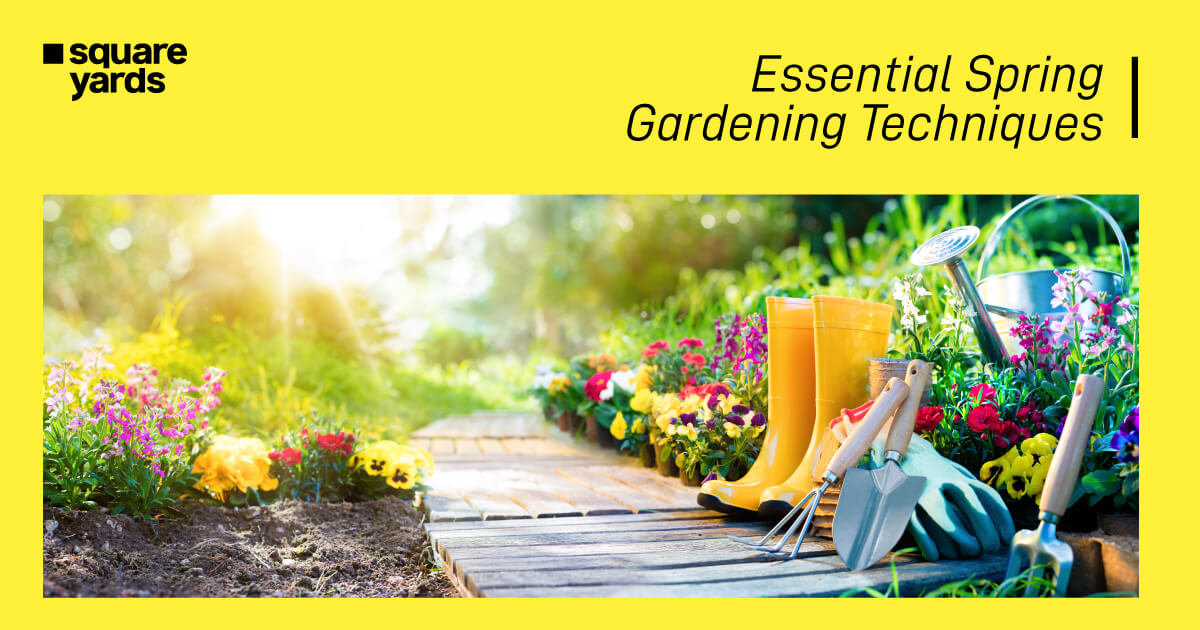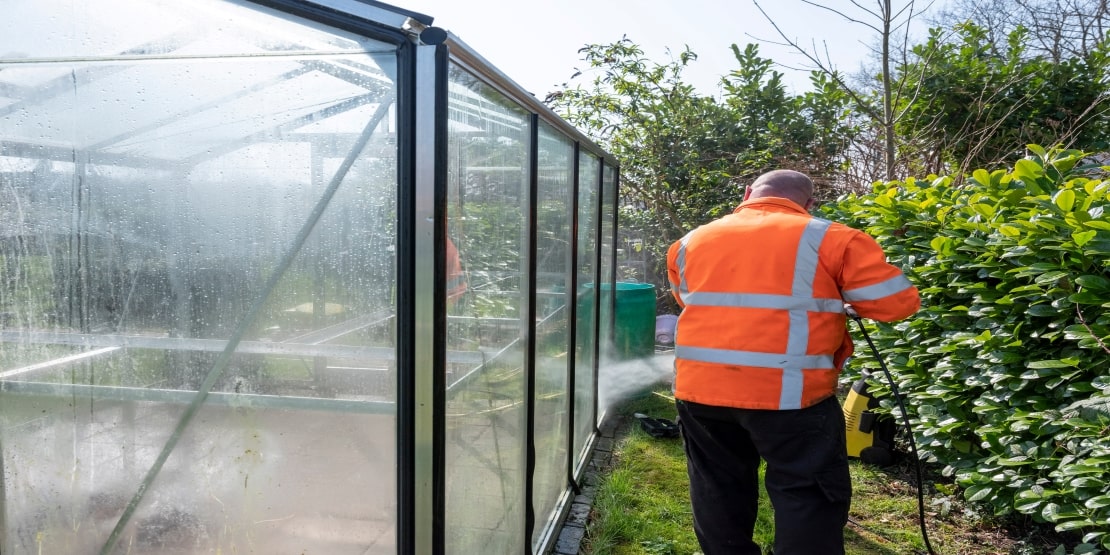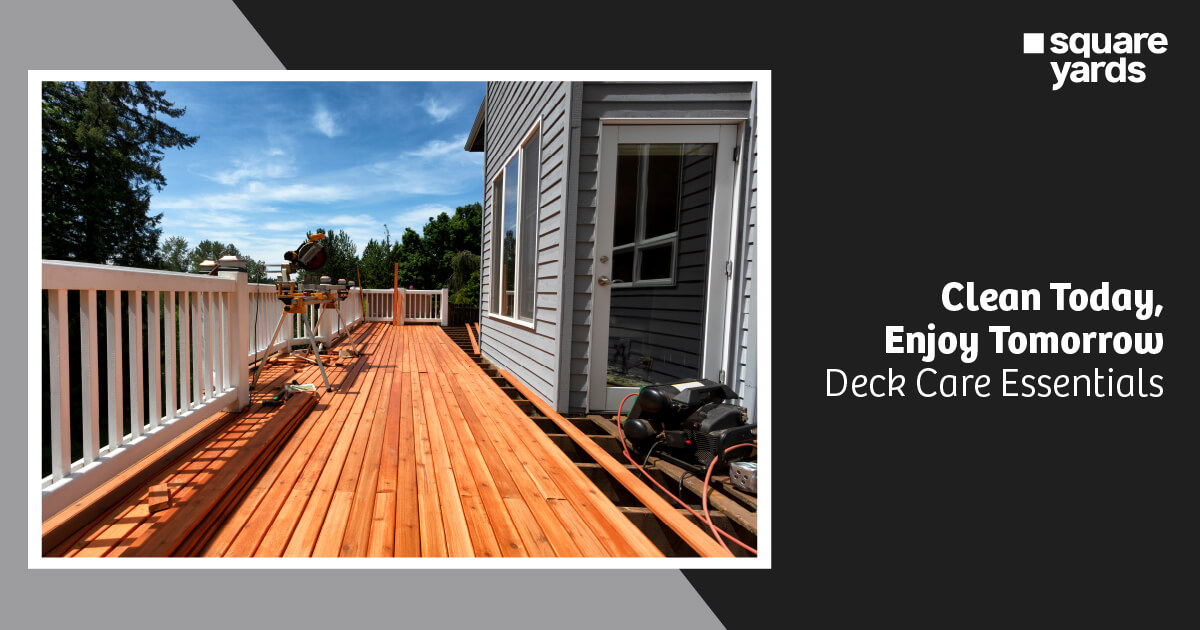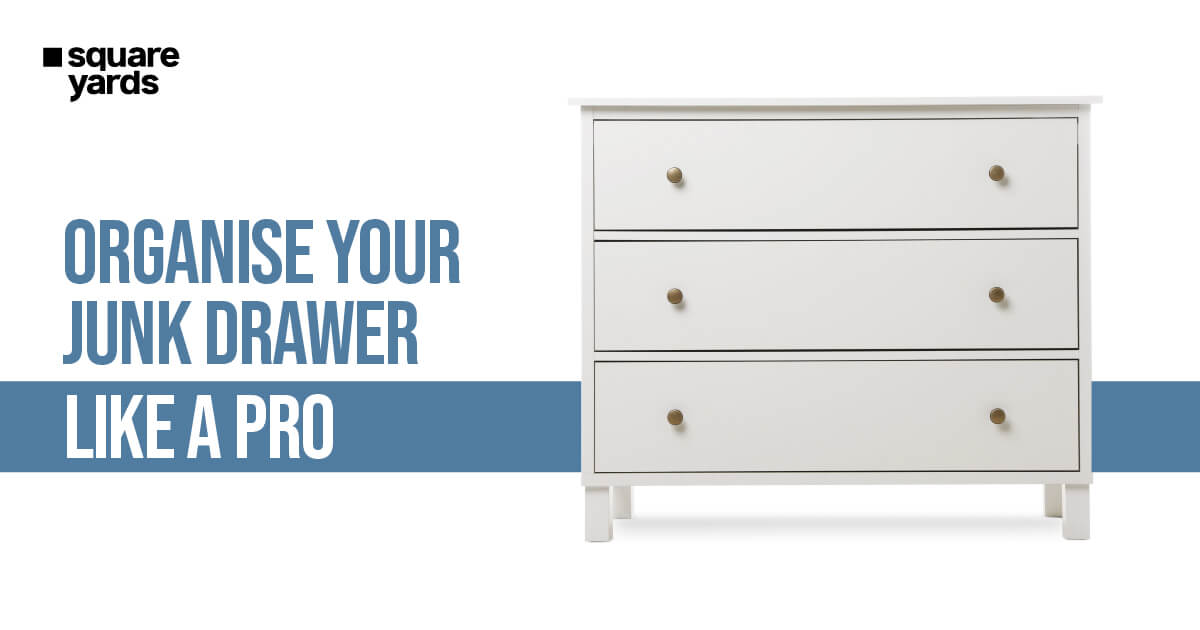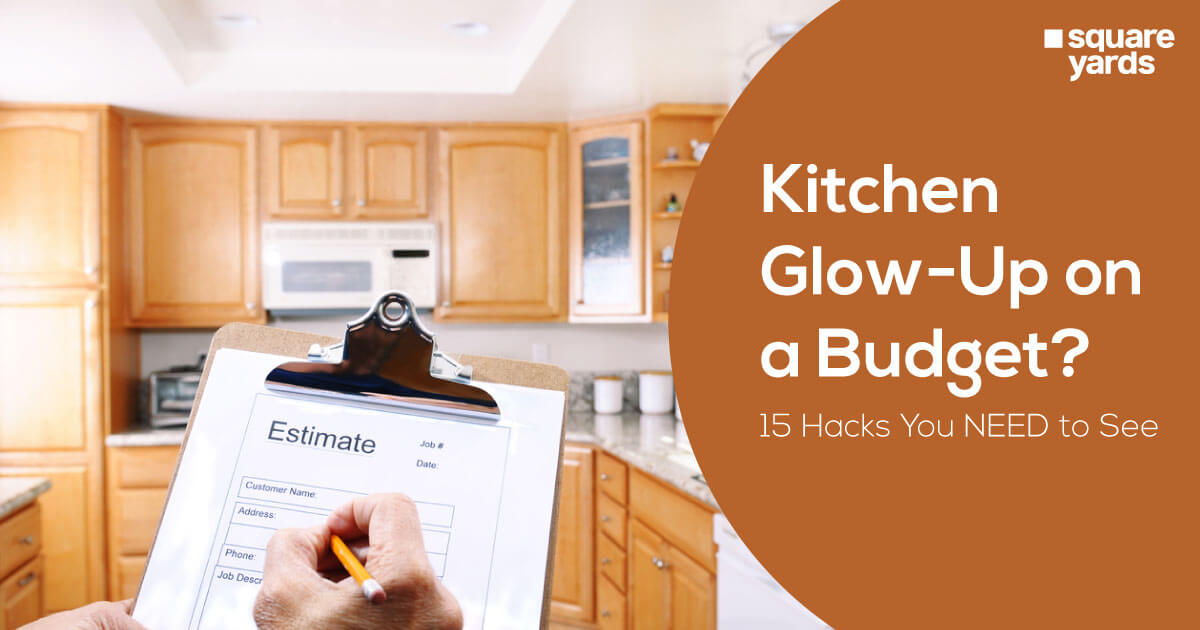It’s that time of the year again – planning for your spring garden! While house hunting, Canada real estate offers you several properties with either beautiful gardens or with sprawling garden spaces. However, if you want to enjoy spring season gardening in your new or existing home and want to make the most of it, we’ve got you covered. Today’s post is all about planning ahead and nurturing your garden. Our guide covers everything from cleaning and maintenance of your garden to choosing the right plants and soil. We’ll help you prepare your garden for spring in the best way possible. Without any further ado, let’s get started.
Buy Summer Flowering Seeds and Bulbs
Order some summer-flowering bulbs and seeds for the spring season. They are ideal for a windy and wet day and help bring in a rush of colours in your garden. We recommend opting for beautiful flowers such as gladioli, ranunculi, and lilies, right before the arrival of the spring season. Since winters can be dull and you might feel stuck at home, utilize this time to discover new types of plants, bulbs, and seeds. Plan out which plants you wish to grow this year, and don’t forget to watch some YouTube tutorials on planting bulbs.
Get, Set, and Clean
Whether you already have a place or are planning to sell it, cleaning the garden is vital. In Canada real estate, the garden, in fact, is one of the major factors that people consider when buying a home. So, make sure you clean up the garden properly. Remove the leaves and debris from flower beds and cut off old/dead plant growths. Make your garden look neat, tidy, and ready for the spring season. When cleaning, don’t forget to clear out the borders and put the beds back in the soil. To break down the dead organic matter, we suggest clearing it away in a bin or compost pile. For weeds, we recommend buying a brown bin and then burning them off. Just don’t compost weeds because that may cause a lot of issues later.
Ensure Great Soil Quality
Soil is the life of any garden. Kickstart the new season by investing in nutrient-rich and well-drained soil. You need to ensure that the soil quality is better than last year.
To check and improve the soil quality, you need to:
-
- Pick up some soil by hand and squeeze it. If it crumbles, the quality is good. But if it is sticky and clumpy, the soil is too wet. Wait for the winter moisture to dry or evaporate. After it dries, use an ‘All-Purpose Garden Soil’ to give the ground bed a thick foundation. The soil should be such that the plant’s roots can grab onto it and get constant nutritional support.
- Use a soil revitalizer to add essential nutrients to the soil, especially if you wish to use raised beds from last year. It will restore the soil’s ability to retain water and ensure better plant growth.
- Focus on the potting soil in the plant containers. Again, add a layer of Soil Revitalizer for restoring the soil structure. We also recommend topping off each container with a Potting Mix. Both Revitalizer and Potting Mix create a blend that the plants can easily feed on for up to half a year.
Greenhouse Cleaning is Crucial
Your greenhouse deserves a good clean up too, and this is the right time for it! Just before the arrival of spring, it is ready for cuttings and seedlings. Wash it from the outside using a detergent or a disinfectant. Doing so will bring in more light during the growing season and also keep diseases or pests away. While disinfecting, make sure you don’t leave out the inside of the glass. Sometimes pests and diseases spread by surviving on the glass. So, it has to be cleaned from time to time.
A lot of debris gets collected on the benches and floors. Clean it all up using a hot water solution of disinfectants. You will find plenty of garden disinfectants online. In addition to that, you should also wash seed trays and pots to prevent any diseases. Once the cleaning completes, give your greenhouse some time off to dry. After it dries, examine the greenhouse structure for any damages or broken parts. If you think something requires a replacement, do it immediately.
Stock Up the Right Tools
In gardening, having the right tools can make all the difference. If you’ve been gardening for a while, you may have a few of them already. But there’s a chance you could be missing out on some, so here’s a checklist:
-
- Tools with long handles such as a garden hoe, rake, and shovel. They help to prepare and shape garden beds.
- Wheelbarrow for soil hauling and other heavy items.
- Hand tools such as a transplanter, trowel, and cultivator.
- Maintenance tools like Pruning Shears.
- Garden plant cage.
- Bamboo Gloves or Garden Gloves.
- Kneelers.
- Soil Knife.
- Tree Watering Bag.
- Tunnel Plant Row Cover
Sow Seeds that Take Time to Grow
The months of January and February are the best for sowing plant seeds that require a longer duration to grow. These include antirrhinums, peppers, aubergines, geraniums, and begonias. You can use a heated propagator to ensure the healthy growth of these plants. You will come across various guides for sowing seeds in colder months, so go ahead and explore. Experiment a little this year and make the most of the plant season. You will most likely have multiple questions, too, so don’t be afraid to ask experts.
Look for and Remove All Pests from Your Garden
Inspect your garden for hibernating pests. Tracking them down and removing them will help you prevent a lot of problems during the spring season. If you’re not sure how to inspect, just take a close look at the plant’s crowns. You will definitely spot snails, aphids, or slugs making a home there. For those who have been gardening for a while, start cleaning off previous year’s summer bedding. Wipe out all the larvae and get ready to tackle vine weevils with Plant-parasitic nematodes (PPNs) and chemical drenches.
Think about Rainwater Collection

Make good use of rainwater, and don’t let it go to waste this rainy season. Rainwater harvesting is important for eco-friendly gardening. Many times during summers, water companies rely on groundwater streams and reserves. This affects the environment and also costs a lot to the customers. Besides, rainwater is the most amazing water type for plants. Plants like blueberries, camellias, and rhododendrons grow best in rainfall. This is because normal tap water tends to be a little alkaline. And, because of all these reasons, you will also find various properties in Canada real estate to have pre-installed rainwater harvesters.
However, when installing a water butt by yourself, place it below the downpipe of your shed or home. If you have a closed drainpipe, you will require a diverter kit to take out rainwater.
Plan out Moving Deciduous Shrubs
The cold season is a great time for moving deciduous shrubs and trees. Choose a non-windy day to move the shrubs and prevent the roots from drying out. Dig out a trench around the shrub you wish to move. Taking off the root will help the plant re-establish itself in the new location as soon as possible. When replanting the shrub in its new position, make sure it is placed at the same level as it was placed previously. Make sure you water it well right after that.
Retain the Gates and Fences
Since winters don’t involve much gardening, it is the right time to invest in maintenance. Garden maintenance involves checking the gates, trellis, and fence panels for damages. If you come across anything broken, fix those structures before the arrival of spring. Your garden may have broken structures or segments, too, so make sure you get those fixed. Maintenance also involves cleaning in Canada real estate. Clean the garden gates and panels with a power wash. It will help you remove all sorts of moss, grime, and dirt. Gates, in particular, tend to have stubborn grime that requires harsh cleaning methods.
Select the Right Plants

It is essential to choose plants that fit your growing conditions. You need to invest in plants that can tolerate excessive heat, especially in warm climates. These include pumpkins and melons. Research well and select plant varieties that you know will grow properly in the space you have. Analysing your Canada real estate space is highly important. For those with no or minimal gardening experience, we recommend consulting a professional. Let the professional inspect the space for you and suggest the right plants. Use their experience to your benefit and then get down to buying plants.
Sharpen Your Tools
You need to clean and sharpen your gardening tools during winters. Maintaining them will help you ensure your tools last longer. It will also help you save money. If you aren’t sure how to clean your gardening tools, use a powerful detergent along with a scourer and hot water. Cleaning these tools will sharpen them and improve their performance. Once clean, you should also apply some oil on tools with blades and hinges.
Make a Composting Area
Do you have a composite area? If not, now is the time to set it up. You can either buy a ready-made compost bin or build a new one on your own. A compost area is a separate area to put all the organic waste in. A rich compost comprises vegetable peelings, grass clipping, wood, and paper prunings.
To Conclude
Preparing your garden for the spring season involves a lot of things. We tried listing as many points as possible to help make things easier for you. It is up to you if you want to work on all the points in this article or pick only a few of these. Also, check out our daily Canada real estate blogs to keep yourself updated with the market condition, how you can go about buying real estate Canada, and lots more. Let us know if there’s anything you want us to cover. We’d love to take it up.
Frequently Asked Questions (FAQs)
To start a spring garden, first clear any debris and dead plants. Enrich and aerate the soil, then order summer-flowering bulbs like gladioli, ranunculi, and lilies. Choose plants suited to your garden's conditions. Use appropriate tools to shape and maintain your garden beds.
Spring is ideal for planting because the soil is warming up, which promotes root growth. The increasing daylight and typically more frequent rainfall provide an optimal environment for new plants to thrive before the stress of the hotter summer months.
To prepare for spring planting, first tidy up your garden by clearing out weeds, debris, and old mulch. Next, prune necessary plants and prepare the soil by loosening it, adding compost, and adjusting pH levels. Finally, sharpen and organise your tools, ensuring everything is ready for the planting season.
To start a spring garden from seeds, check the seed packet for the right indoor planting time, usually six to eight weeks before the last frost. Plant seeds at the depth specified on the packet—some need light and should be on the surface, while others require deeper planting. Cover the seeds with a humidity dome or plastic wrap to keep them moist until they germinate, then remove the cover to promote airflow. Gradually acclimate seedlings to outdoor conditions over a week before transplanting them to the garden.
Yes, the spring season benefits plants due to the mild weather conditions, which support the growth and development of new plants. The moderate temperatures and increased moisture help establish plants, making spring an ideal time for gardening activities. How do you make a spring garden?
Why is spring good for planting?
How do you prepare for spring planting?
How do you start a spring garden seed?
Is spring season good for plants?

